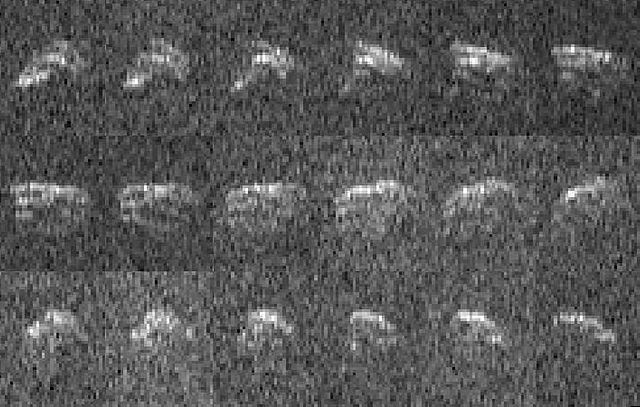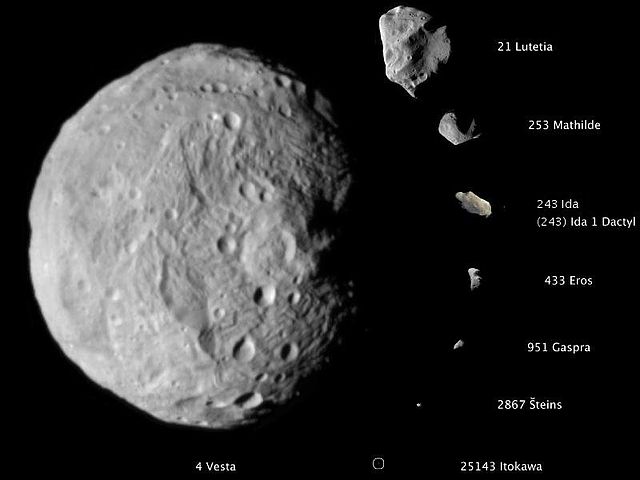Eros is a stony asteroid of the Amor group, and the first discovered, and second-largest near-Earth object. It has an elongated shape and a volume-equivalent diameter of approximately 16.8 kilometers. Visited by the NEAR Shoemaker space probe in 1998, it became the first asteroid ever studied from its own orbit.
Eros – composite image of the north polar region, with the craters Psyche above and Himeros below. The long ridge Hinks Dorsum, believed to be a thrust fault, can be seen snaking diagonally between them. The smaller crater in the foreground is Narcissus. Watters, (2011)
View from one end of Eros across the gouge on its side towards the opposite end
First mosaic image of Eros taken from an orbiting spacecraft
Mosaic image of Eros
An asteroid is a minor planet—an object that is neither a true planet nor a comet—that orbits within the inner Solar System. They are rocky, metallic, or icy bodies with no atmosphere. The size and shape of asteroids vary significantly, ranging from small rubble piles under a kilometer across to Ceres, a dwarf planet almost 1000 km in diameter.
2013 EC, shown here in radar images, has a provisional designation
A composite image, to the same scale, of the asteroids imaged at high resolution prior to 2012. They are, from largest to smallest: 4 Vesta, 21 Lutetia, 253 Mathilde, 243 Ida and its moon Dactyl, 433 Eros, 951 Gaspra, 2867 Šteins, 25143 Itokawa.
Vesta (left), with Ceres (center) and the Moon (right) shown to scale
Phobos








